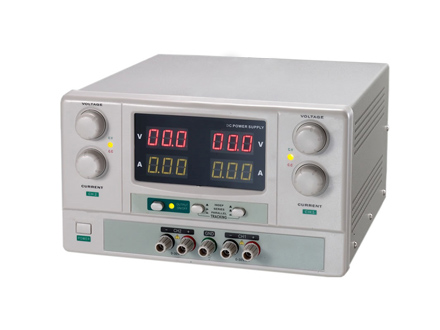What Is a DC Power Supply and Why Is It Essential in Electronics?
2025-06-26
A DC power supply is a fundamental device in electronics, manufacturing, and research. It provides a controlled direct current (DC) voltage to power circuits, components, and devices. Whether you’re a professional engineer, a lab technician, or a hobbyist, a reliable DC power supply is crucial for testing, prototyping, and operating electronic systems.

What Is a DC Power Supply?
A DC power supply is an electrical device that converts alternating current (AC) from the power grid into stable, regulated direct current (DC). Unlike AC, which changes direction periodically, DC flows in a constant direction, making it suitable for most electronic circuits and devices.
DC power supplies come in many forms, from compact desktop models for labs to large industrial units used in production lines.
Types of DC Power Supplies
1. Linear DC Power Supply
Uses a transformer and voltage regulator.
Offers clean, low-noise output.
Ideal for sensitive analog circuits.
Bulkier and less efficient due to heat dissipation.
2. Switching DC Power Supply
Uses high-frequency switching and conversion techniques.
Compact and energy-efficient.
Suitable for high-power applications.
May produce more electrical noise than linear supplies.
3. Programmable DC Power Supply
Controlled via digital interface (USB, RS-232, LAN, etc.).
Offers precise voltage and current settings, often with software automation.
Common in R\&D and automated test environments.
4. Battery-Operated DC Power Supply
Portable and often used in field testing or mobile labs.
Limited power capacity.
Key Features to Consider
Voltage and Current Range: Choose based on the needs of your circuit or device.
Adjustability: Variable output settings allow for flexibility in different test scenarios.
Stability and Regulation: High-quality units provide consistent output regardless of input fluctuations or load changes.
Protection Features: Look for overvoltage, overcurrent, and thermal protection to safeguard both the power supply and connected devices.
Display and Controls: Digital readouts and fine-tuning knobs help with accurate settings.
Where Are DC Power Supplies Used?
Electronics Labs: For testing circuits, components, and prototypes.
Manufacturing: In automated testing and assembly of electronic devices.
Communications Equipment: Powers radios, transmitters, and network devices.
Medical Devices: Used in diagnostics, imaging, and monitoring equipment.
Automotive: Bench testing of electronic control units (ECUs), sensors, and batteries.
DIY and Education: A staple tool in maker spaces, schools, and training centers.
Benefits of Using a DC Power Supply
Precise Power Control: Crucial for safe, repeatable testing.
Improved Safety: Built-in protection helps prevent component damage.
Flexibility: Serves a wide range of voltages and currents for diverse projects.
Reliability: Provides steady power that standard adapters or batteries may not.
Conclusion
A DC power supply is a cornerstone of modern electronics. From design labs to production lines, it offers the stable, adjustable power needed to develop and test everything from smartphones to space equipment. Whether you need accuracy, programmability, or rugged performance, there's a DC power supply tailored to your needs—making it an indispensable tool for anyone working with electronics.


